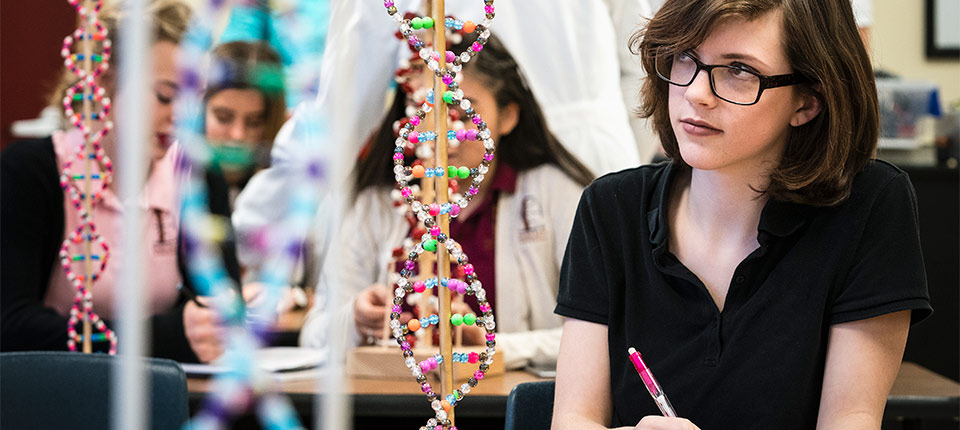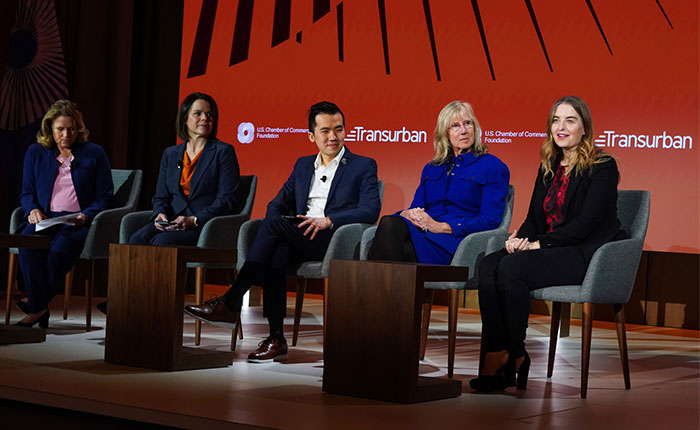
Women in STEM: Why Exposure is Key
Abbott is changing the face of STEM, ensuring we have the brightest STEM minds solving the world’s challenges.
Mar. 24, 2023
- Copy Link
- Share on X
- Share on Facebook
- Share on Linkedin
"It's not a skills problem."
That's what people often say when talking about the shortage of women in science, technology, engineering and math (STEM) fields.
And that's true. So what's keeping women from STEM?
There are a number of issues, but it's largely about exposure, said Dr. Beth McQuiston, a neurologist and medical director at Abbott. And McQuiston knows about this first hand.
She was working as a renal dietitian in a Chicago-area clinic when she realized neurology was a career someone like her could also pursue.
"I would read these dense medical manuals about the brain for fun and my friends at the hospital who were doctors said to me, 'You could do that. You could be a neurologist,' " McQuiston said.
That's just what she did, leading to a career in which she now combines her passion for nutrition with her love of neuroscience.
McQuiston shared her story, as well as insight on our high school STEM internship program, during a panel at the U.S. Chamber of Commerce Foundation's International Women's Day Forum.
McQuiston works with our interns — many of them young women — making sure they have opportunities to do meaningful work while also getting a sense of just how vast the STEM field is.
"We make sure the interns know there are a lot of ways to engage with STEM, including opportunities that don’t focus on the more traditional STEM fields like math and biology," said Bryan Quick, director of talent acquisition at Abbott.
The Internships are Working
This commitment to the next-generation of innovators is working. Among our high school interns, 95% go on to study STEM in college or take a STEM job. And more than 70% of former high school interns we hire as full-time engineers, are women.
This growing trend of women joining STEM is occurring more broadly too.
The number of women in the U.S STEM workforce increased 31% between 2011 and 2021, which is a faster rate than seen among men during the same time period (15%). Yet the number of women in STEM careers still falls below where it should be.
Consider this:
- Although men and women represent similar proportions of the total U.S. workforce — 52% and 48% respectively — a greater share of men (29%) than women (18%) work in STEM occupations
- The gender gap widens significantly as you narrow the STEM focus to fields like information security analysts (18% of roles are held by women) and electrical engineering (8.1% of roles are held by women).
- All of this comes as federal data predict the need for more than 1 million more STEM workers by 2031 in the U.S. alone.
"This is proof that the more than decades-long commitment of Abbott and other organizations to introduce young people — especially girls — to STEM through internships and other programs is making a difference," said Quick. "But it's also a reminder that the work isn’t done. Not even close."
What's Next?
We've expanded our high school internship program to now reach seven countries, with three more expected to participate in the program by the end of this year.
We recently updated our high school STEM internship Blueprint of what's worked for us to include a chapter on earning college credit for STEM internships.
And our Women in STEM employee network created a children's book
"What Does STEM Look Like," which is available for free download, to educate children about why STEM is important and let them know that anyone can work in STEM.
"Developing STEM stars will take all of us," McQuiston said during the International Women's Day panel. "Talk to your friends. Find champions for the girls you know. The world is so big and the STEM opportunities are endless."

For the latest on Abbott’s life-changing technology, get updates directly in your inbox.